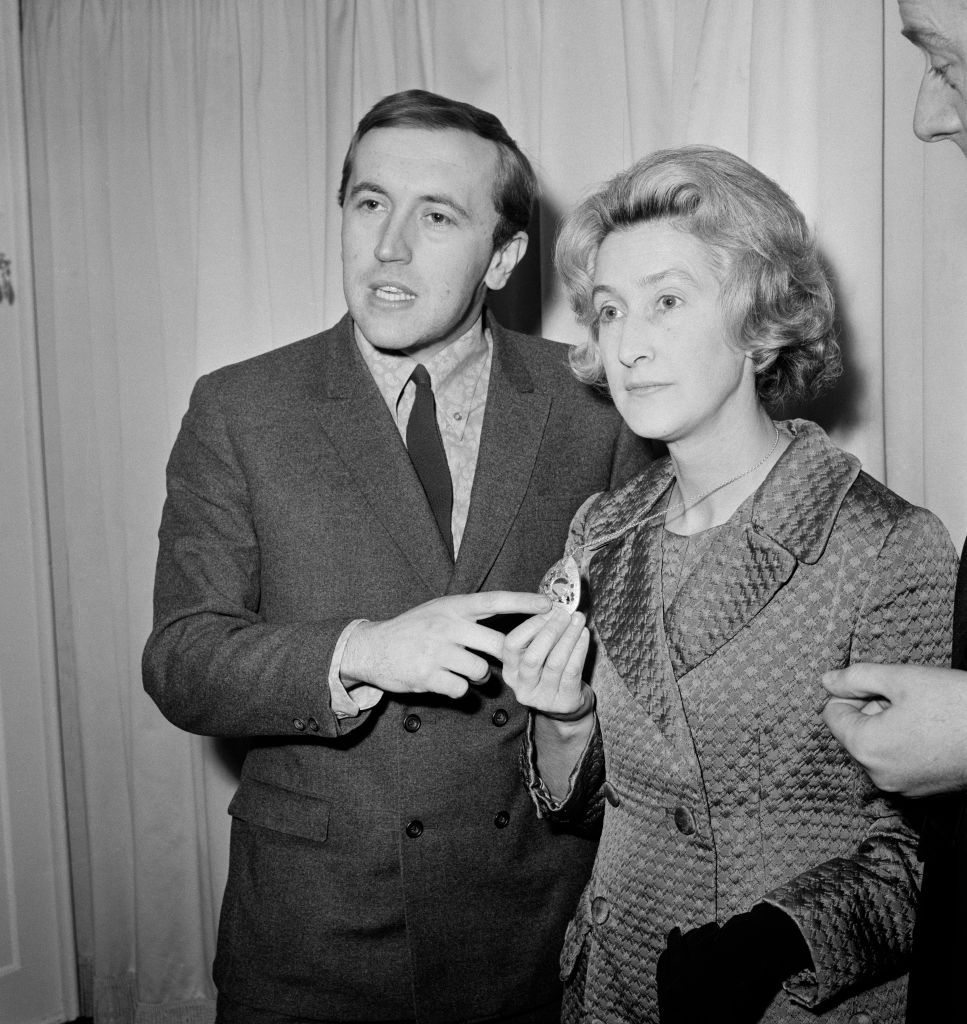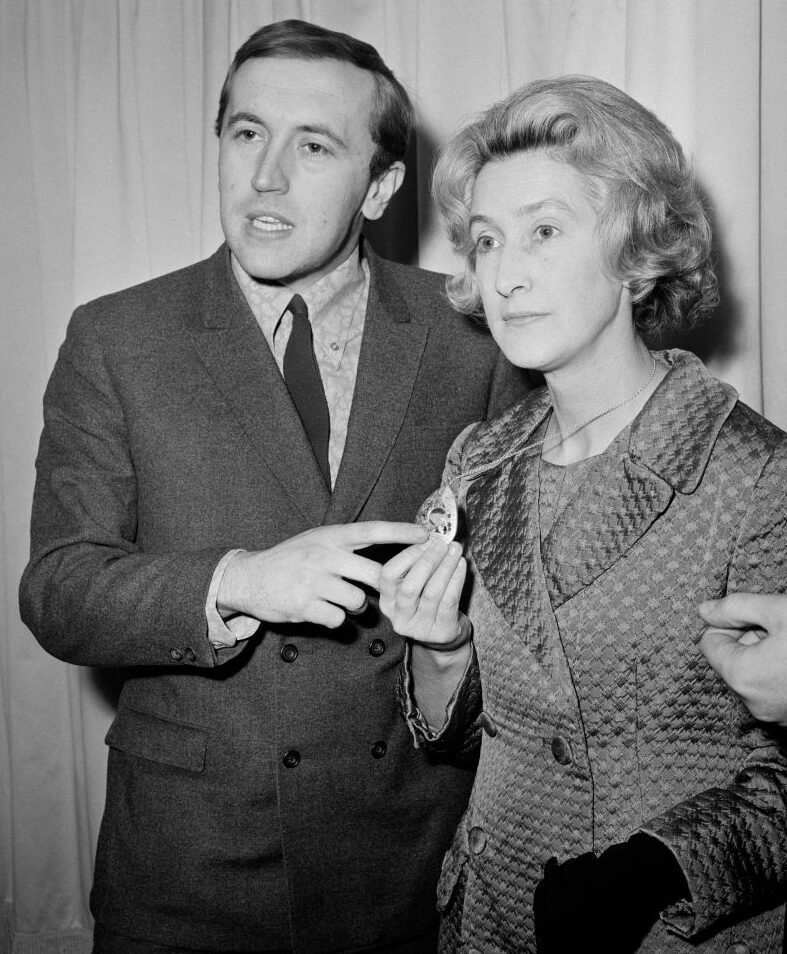Readers of ‘My life is in pieces – new lives for the Stone of Destiny‘ will already know that not quite all the Stone of Destiny is in Perth. I don’t just mean the wee fragment gifted to Alex Salmond in 2008 that hit the headlines in January 2024. Yes, there are geological samples; one of them entered a new life when it was sent to Australia and returned mounted in the Diamond Jubilee State Coach, travelling with Charles and Camilla to their Coronation. Hiding in plain sight, however – for much of the story can be traced in historic newspapers and archives – are the 30-plus fragments that Bertie Gray collected when he masterminded the Stone’s 1951 repair before it was laid out for the authorities to collect from the high altar of Arbroath Abbey.
Bertie Gray was a Glasgow stonemason and politician, righthand man to John MacCormick who set up and led the Scottish Covenant Association. Gray carefully curated these fragments, numbering and recording them ‘to prevent a flood of fakes’. With aforethought, he distributed them to the Glasgow students who took the Stone, fellow conspirators and activists (e.g. John Rollo), politicians (including Winnie Ewing and Margo MacDonald), journalists, and researchers, to himself and his family.

Television host David Frost shows interest in the pendant with Stone fragment worn by politician Winnie Ewing in 1967, the fragment a gift to her from Bertie Gray. Ewing said that ‘she would like to be arrested for being in possession of stolen property’ (Daily Mirror, 11 December 1967)
Image: photographer unknown via
Getty Images
These fragments of the Stone are of considerable social value. They have passed on within families, been gifted (John MacCormick’s son Neil gave theirs to Salmond) and sometimes ended up in museum collections. They went to Australia, Canada, Scotland and England, and perhaps beyond, but where are they all now? For example, who won the second prize of the 1955 Scottish Covenant Association prize draw, a ‘Brooch with Genuine Piece of Stone of Destiny’. What stories could its life illuminate?
I have concluded my Leverhulme Trust / British Academy Senior Research Fellowship by writing up the ‘full’ story of all known Stone fragments for publication (those Gray curated, and others). In practice I can only identify the (part-)fate of just over half of Gray’s fragments and only say where four of these are cared for now. Perversely, it will be an achievement if my paper is already out of date by the time it is published, if this research encourages more people to come forward to share their personal stories about the lives of fragments (particularly the descendants of Bertie Gray!).
If you can fill any gaps, including the stories of what the fragments meant and how they have been cared for, do please get in touch (see a summary of some of the public responses received here). It’s important to capture and share your stories, for the understanding that will bring, and for posterity. Your fragments and stories are fascinating, and untold. They matter in their own right, as well for how they reshape the life of a national icon. I find myself taking inspiration from the author James Robertson’s epic novel And the Land Lay Still (in which the Stone does feature):
A story is a whole mass of details that come together and form a narrative. Without that they’ve just a lot of wee pieces. So what happens if you take a story and break it into wee pieces? When you put it back together again, will it turn out the same way? (Robertson 2010, 40; emphasis in bold mine)
I am already particularly grateful to Richard Keltie for bringing the Ewing example, and others, to my attention.
Sally Foster (contact details here)

